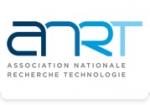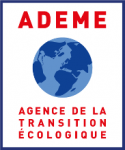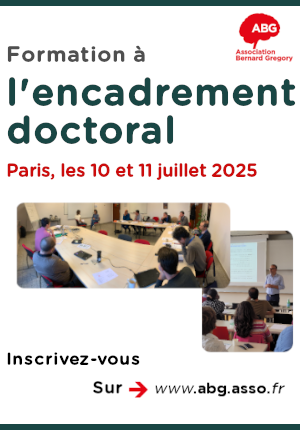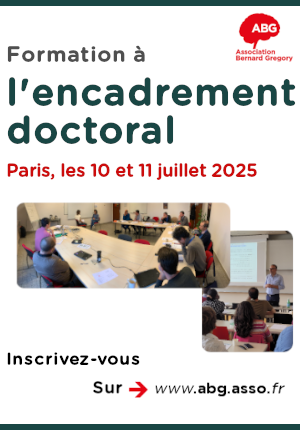Evaluation of Current and Historical Seismic Vulnerability of Nice's Built Environment through Operational Modal Characterization
| ABG-131323 | Thesis topic | |
| 2025-04-22 | Public funding alone (i.e. government, region, European, international organization research grant) |
- Civil engineering, construction and public works
- Data science (storage, security, measurement, analysis)
- Earth, universe, space sciences
Topic description
CONTEXT
The city of Nice is situated within France's highest regulatory seismic zone (Zone 4), the region exhibits moderate but non-negligible seismicity, evidenced by historical events such as the 1887 Ligurian earthquake (M~6.5) and the 1664 Vésubie earthquake. The city is also characterized by significant site amplification effects, particularly in sedimentary basins, where seismic wave trapping in superficial soft soil layers overlying rigid bedrock can produce amplification factors exceeding 10 at specific resonant frequencies (Régnier et al., 2020; Courboulex et al., 2020).
The combination of elevated seismic hazard, pronounced site effects, and substantial urban vulnerability in the Côte d'Azur region has motivated comprehensive seismic risk evaluation studies under the GEMITIS, Risk-UE, and GEMGEP research programs (Bour et al., 2004; GEMGEP, 2005). These scientific investigations provided the foundation for Nice's regulatory Seismic Risk Prevention Plan (PPRs), formally adopted in 2018.
However, vulnerability assessments remain limited, particularly for existing structures outside Category IV (high-importance buildings). The CGEDD report (Cinotti et al., 2019) emphasizes the need for enhanced diagnostic protocols. Dynamic characterization of structures via ambient vibration testing (AVT) is one to tool to fullfill this objectve. The measurements can be used to determine fundamental frequencies and modal shapes, to performstructural health monitoring (SHM) to detect damage-induced frequency shifts (Dunand et al., 2006), and to make empirical validation of numerical models using recorded motion data (Fernández Lorenzo et al., 2015).
Recent experimental campaigns in Nice have focused on permanent instrumentation of key structures such as the Alpes-Maritimes Prefecture (RAP network), AVT-based modal analysis of 84 typical Nice buildings (Clément et al., 2024, Riskue and GEMITIS projects), and temporary deployments in the Var Valley (Rohmer, 2022). Critical knowledge gaps persist in establishing quantitative correlations between site amplification and structural response, developing fragility curves for common building typologies, and implementing long-term SHM to assess cumulative seismic effects.
OBJECTIVES
The Phd subject proposed to implement in-situ quantitative characterization of key dynamic response parameters for common building typologies, combined with long-term structural health monitoring of selected heritage buildings in Nice. There is now a critical need to systematically characterize the vibration frequencies of buildings across Nice. Among the instrumented structures, some exhibit complex dynamic behavior, including fundamental torsional modes that may adversely affect seismic performance. These structures require more detailed measurements to refine preliminary assessments. Additionally, permanent monitoring systems should be implemented for atypical buildings, particularly historical structures, to enable long-term structural health tracking. The thesis conducts parallel vulnerability assessments: systematically analyzing modern buildings' seismic performance (Part 1), while developing specialized evaluation protocols for historical structures (Part 2).
PART 1:
The analysis of building resonance frequencies through vibration measurements provides reference values for dynamic structural properties, enabling the assessment of seismic vulnerability and prediction of potential damage levels relative to local seismic hazard. This methodology will be systematically implemented across buildings in Nice.
Vibration measurements serve a dual purpose in structural analysis. First, they enable the calibration of numerical models that simulate elastic structural behavior for seismic response prediction, as demonstrated in studies by Skolnik et al. (2006) and Caprili et al. (2012). Second, the measured dynamic parameters allow for direct vulnerability estimation without requiring detailed numerical modeling. Previous research by Michel et al. (2008, 2012) and Perrault et al. (2013) established methodologies for damage prediction using simplified models calibrated with in-situ fundamental frequencies, though these approaches traditionally neglect both torsional vibration modes and soil-structure interaction effects.
The first part of this doctoral research proposes significant methodological advancements by developing an integrated approach that incorporates ambient vibration data collected from both buildings and underlying soil strata. The enhanced methodology will determine fundamental frequencies and dominant vibration modes while specifically accounting for both flexural and torsional responses. The research will produce vulnerability matrices and damage probability assessments specifically tailored to Nice's seismic hazard profile. The implementation strategy involves three key components :
- Building upon Laetitia Clément's recent work, the study will first establish a comprehensive database of existing vibration measurements for Nice's buildings and soils. This database will be expanded through additional measurements to properly identify previously uncharacterized fundamental vibration modes, with particular attention given to ensuring representation of all building typologies and microzones, especially Category IV structures.
- The research will then integrate these dynamic property measurements with Nice's Seismic Risk Prevention Plan (PPRs) microzonation data. This integration will enable the calculation of site-specific expected accelerations based on multiple factors including structural vibration periods, building importance categories, and soil classification parameters that account for local site effects.
- Finally, the study will combine the developed vulnerability curves with microzonation ground motion data to produce city-scale vulnerability and expected damage assessments. This comprehensive approach considers construction typologies, environmental factors, and seismic response characteristics to advance seismic risk assessment methodologies.
The study represents a crucial step toward developing detailed seismic vulnerability and risk maps for the entire city that account for construction typologies, local environmental conditions, and structural response characteristics under seismic loading.
PART 2
A comprehensive vibration measurement campaign will be implemented on selected historical structures in Nice, employing extended-duration, high-precision monitoring to enable detailed structural characterization. This approach will capture not only the fundamental vibration modes but also higher-order modal responses and potential localized deformation patterns, providing critical data for refined seismic vulnerability assessments and targeted structural reinforcement strategies for culturally significant buildings.
Recent preliminary measurements conducted at Cathédrale Sainte Réparate and Hôtel de Ville in Old Nice during Laetitia Clément's M2 research have established baseline data for these structures. Historical records indicate this district exhibited greater seismic resilience during the 1887 Ligurian earthquake compared to other areas such as Médecin, Thiers, and Vernier, where documented macroseismic intensities were notably higher (Laurenti, www.azurseisme.com). In the current absence of instrumental seismic records, systematic analysis of historical damage patterns remains essential for developing robust vulnerability models and anticipating potential impacts from future seismic events.
The research program will specifically investigate building interaction effects within urban clusters, with planned geophysical surveys (combining active and passive seismic methods) throughout Nice's city center to characterize subsurface velocity profiles. These measurements aim to identify and quantify building-environment interaction phenomena that may influence seismic response.
A key innovation involves the permanent installation of velocimetric sensors on high-value heritage structures. This monitoring system will serve dual purposes: first, to characterize environmental influences (particularly temperature effects) on dynamic structural parameters including resonance frequencies, modal configurations, and damping characteristics; second, to enable continuous structural health assessment for long-term heritage conservation. Current understanding of climatic effects on historical masonry structures remains incomplete, particularly regarding secular, seasonal, and abrupt environmental variations (Combey et al., 2022; Montabert et al., 2022). Quantitative tracking of dynamic property variations will establish baseline behavior patterns and enable discrimination between normal environmental fluctuations and potential damage-induced anomalies.
The measurement protocol incorporates high-resolution ambient vibration monitoring with minimum 72-hour recording durations and multi-sensor arrays for comprehensive three-dimensional mode identification. Data interpretation will integrate microzonation information, historical damage patterns, and material degradation models to develop climate-structure interaction transfer functions. Implementation follows ICOMOS-ISCARSAH guidelines for historic structure analysis.
Anticipated outcomes include the first complete modal characterization of Nice's key heritage buildings, development of temperature-frequency correlation models for masonry structures, establishment of early-warning thresholds for damage detection, and formulation of seismic retrofitting guidelines for historical urban blocks. This research will significantly advance understanding of long-term environmental effects on masonry dynamics, improve methods for distinguishing climatic variations from structural degradation, and develop enhanced protection protocols for clustered historical buildings.
The scientific contribution extends current practice through novel integration of long-term monitoring data with seismic vulnerability assessment, particularly for complex urban heritage environments.
Funding category
Funding further details
Presentation of host institution and host laboratory
Le laboratoire Géoazur est une Unité Mixte de Recherche pluridisciplinaire, composée de géophysiciens, de géologues, et d’astronomes se fédérant autour de grandes problématiques scientifiques : les aléas et risques naturels (séismes, glissements de terrain, tsunamis, crues) et anthropiques (séismes et vibrations induits par l’homme, pollutions, comportements humains, vulnérabilités des territoires et des structures), la dynamique de la terre et des planètes, les géosciences des environnements marins (de l’innovation numérique et instrumentale aux applications), et la géodésie et métrologie spatiale.
Website :
PhD title
Country where you obtained your PhD
Institution awarding doctoral degree
Graduate school
Candidate's profile
The ideal candidate should hold a degree in civil engineering with specialized coursework in structural dynamics and earthquake-resistant design. A strong foundation in soil mechanics and structural mechanics is essential. Additional expertise in signal processing techniques is highly desirable. The candidate must be proficient in scientific programming languages, particularly Python or MATLAB, for data analysis and numerical modeling.
Vous avez déjà un compte ?
Nouvel utilisateur ?
Get ABG’s monthly newsletters including news, job offers, grants & fellowships and a selection of relevant events…
Discover our members
 MabDesign
MabDesign  Institut Sup'biotech de Paris
Institut Sup'biotech de Paris  Aérocentre, Pôle d'excellence régional
Aérocentre, Pôle d'excellence régional  MabDesign
MabDesign  Ifremer
Ifremer  PhDOOC
PhDOOC  ANRT
ANRT  Tecknowmetrix
Tecknowmetrix  ASNR - Autorité de sûreté nucléaire et de radioprotection - Siège
ASNR - Autorité de sûreté nucléaire et de radioprotection - Siège  Groupe AFNOR - Association française de normalisation
Groupe AFNOR - Association française de normalisation  Laboratoire National de Métrologie et d'Essais - LNE
Laboratoire National de Métrologie et d'Essais - LNE  CASDEN
CASDEN  ONERA - The French Aerospace Lab
ONERA - The French Aerospace Lab  Nokia Bell Labs France
Nokia Bell Labs France  TotalEnergies
TotalEnergies  ADEME
ADEME  CESI
CESI  Généthon
Généthon  SUEZ
SUEZ





